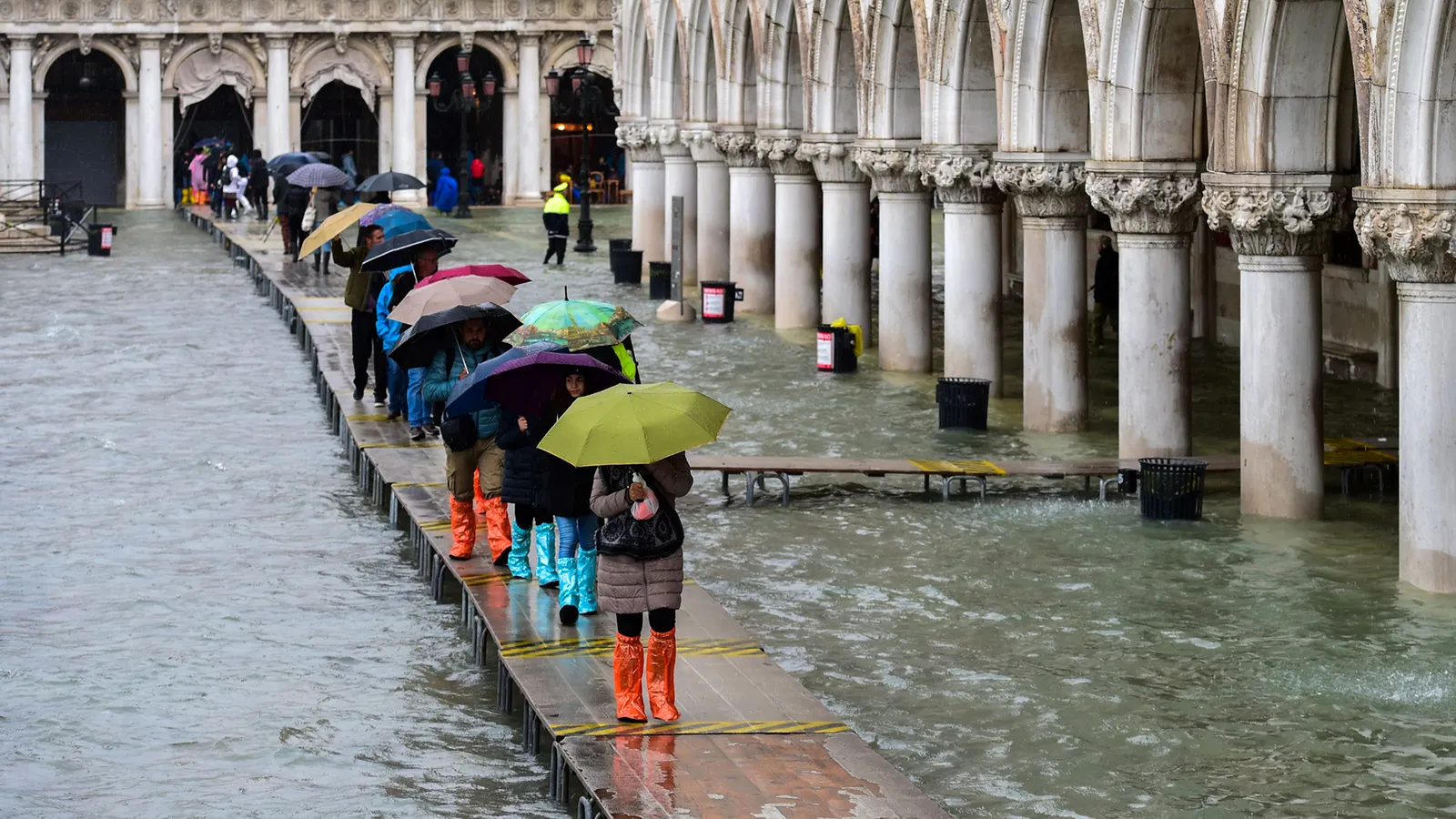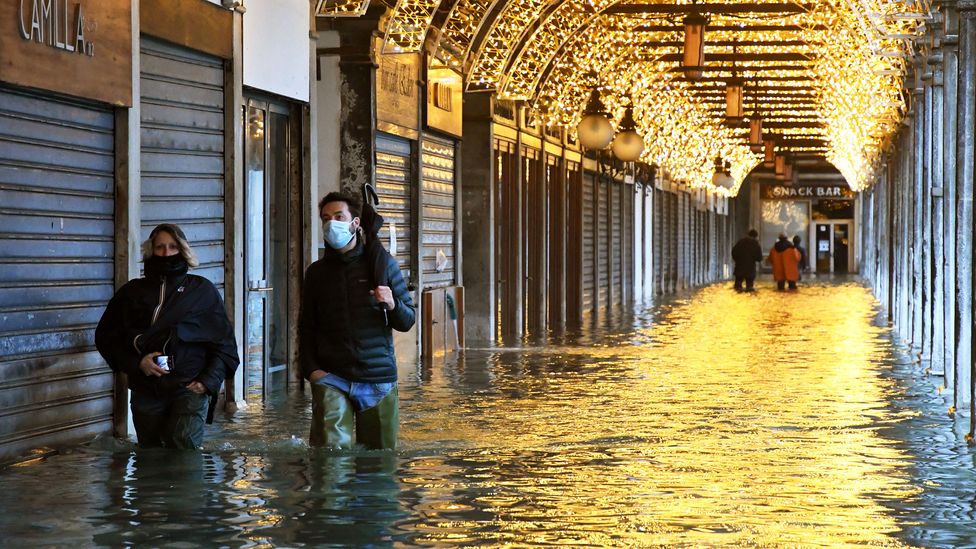Venice is at risk of succumbing to its sinking foundations and rising sea levels. To avert disaster, the city is making changes.

Joseph Phelan, BBC – Venice is a stunning oddity. It is a city built atop around 120 islands, crisscrossed by 177 canals, and is best explored – when on foot at least – via the use of its 391 bridges. It is a watery maze of a city, full of tiny footpaths and tucked away squares, hidden museums and secluded, centuries-old churches.
But all is not well in “La Serenissima”. Indeed, if drastic measures are not taken, the city’s days could be numbered.
This is far from hyperbole: Venice is at very real risk of being consumed by the sea. In worst-case scenario, the city could disappear beneath the waves by as early as 2100. Meanwhile, many of its building are sinking or being damaged by the wakes of boats. It is also routinely overwhelmed by tourists, while its local population is in a state of continual decline.
A worst-case scenario of 4C temperature rise could see 180cm (5.9ft) of relative sea level rise in Venice by 2100
Around the globe, hosts of cities are being similarly hit by Venice’s core problems of subsidence and rising sea levels. Low-lying Jakarta, for example, home to around 11 million people, is in such dire straits that it is being replaced as the capital city of Indonesia by Nusantara, a city not yet even built.
Every at-risk city has its own challenges to tackle. But given Venice’s small size, fame and ability to access funding, it could be an ideal proving ground for technologies and approaches that will play a key role in the global fight against the rising sea.
From elaborate ocean barriers to wake-minimising boats, could Venice’s plight lead to tangible, practical solutions that could be deployed the world over?

In November 2019, Venice suffered its second-worst flooding event since records began almost 100 years ago. It created headlines around the world, with onlookers stunned by the incredible images of Saint Mark’s Square, one of the city’s lowest lying and most iconic areas, covered in feet of water.
The tide reached a peak height of 187cm (6.1ft) above sea level, resulting in more than 80% of the city being under water. A state of emergency was declared, and there was an estimated €1bn euros (£0.9bn/$1bn) worth of damage, according to the Mayor of Venice, Luigi Brugnaro.
The worst ever flooding event, which happened in 1966, saw water levels rise to 194cm (6.4ft) above sea level, and is thought to have seriously damaged at least three quarters of the city’s shops, businesses and studios.
While a gap of over 50 years separated these events, recent trends suggest that we won’t have to wait half a century to see another calamitous flood. Since water levels started being officially recorded in 1923, they have reached 150cm (59in) or more on only 10 occasions, but five of those have been in the last three years.
“Climate change has caused a rise in sea levels, so any city built at sea level is particularly vulnerable,” says Sally Stone, reader in architecture and adaptive reuse at the Manchester School of Architecture.
Venice has always been compelled to battle against the sea, with small, manageable “acqua alta” events, where the city is flooded temporarily at various times in the year, occurring for centuries. But the recent spate of high tides is unprecedented.


